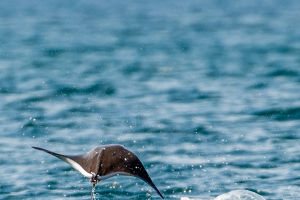When it comes to the Arctic, the first thing that comes to mind is the polar bear.
Because of its sturdy figure, it is the largest carnivore on land and the most representative signature representative of the Arctic.
But in addition to the polar bear, there are other animals in the Arctic track. One of these animals, although they are relatively small in stature, but born with a beautiful appearance. They are called snow elves, and they are the Arctic fox.
The Arctic fox is an animal with a body length of 50-60 cm, a tail length of 20-25 cm, and a weight of 2.5-4 kg. In winter, the body fur is white, with only the tip of the snout being black. In summer, the body fur is grayish-black and the ventral surface is lighter in color.
With very dense down and less needle hair, can live in the ice field at -50 ℃. Plantar hairs are particularly thick.
Arctic foxes prefer to be alone or in groups. Its diet consists mainly of lemmings, but it also eats fish, birds, and berries.
Arctic foxes are found in the coastal zone of the Arctic Ocean and the tundra on some islands and can live on the ice at -50°C.
Arctic foxes prefer to nest in hilly areas, and their nests have several entrances and exits. When there is a snowstorm, the Arctic fox can stay in the nest for days at a time. Year after year, the Arctic fox makes some repairs and extensions to its nest so that it can live there for a long time.
In the summer, when food is abundant, the Arctic fox stores some of its food in its nest. In winter, when the food stored in the den is consumed, the white fox will follow the polar bear and pick up the leftover food that the bear has eaten.
So in winter there are always 2 or 3 white foxes quietly stalking behind the polar bear. But when a polar bear is very hungry, it will also attack the fox.
Arctic foxes can migrate long distances and have a strong navigational instinct. Arctic foxes migrate over distances of 4,600 km in 5.5 months.
On average, they can travel 90 km in a day and can travel for several days. They can migrate from the Pacific coast to the Atlantic coast in a matter of months, traveling close to the east-west distance of Canada.
Arctic foxes are able to navigate hundreds of kilometers. They will leave their nests in the winter and migrate up to 600 km away, returning home the following summer.
The number of Arctic foxes is decreasing, which is due to natural causes, but also to the massive hunting by humans to get the fox's fur.
Currently, the Arctic fox has been placed on the list of endangered species in the world. After all, the beautiful Arctic fox needs to be protected by nature, but also needs to be cared for by humans.


